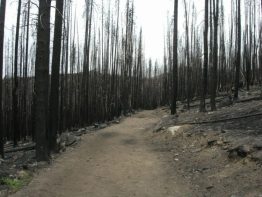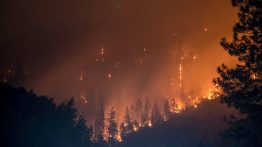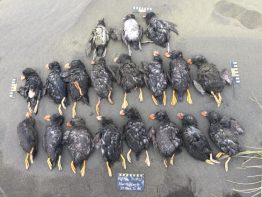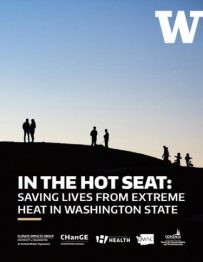In 2006, the Tripod Complex Fire burned more than 175,000 acres in north-central Washington. The fire, which was within the Okanogan-Wenatchee National Forest, was more than three times the size of Seattle. Yet while considered severe at the time, even larger wildfires in 2014, 2015 and 2021 have since dwarfed Tripod. Past research shows that large and severe wildfires like these were much rarer in the western U.S.
Read more at UW News »Are wildfires really getting worse? A Q&A with Brian Harvey
Whether you live in a rural community that grapples with annual threats of destructive wildfires or in a city that now spends part of every summer inundated with smoke, many across North America have found themselves wondering: what happened to cause such a sudden change in the way our forests burn? We sat down with Brian Harvey, assistant professor of environmental and forest sciences in the UW College of the Environment, to discuss some of the most frequently asked questions we encounter about the causes of wildfires, how they’re changing and what we can do to limit their impacts on human health and property.
Read more »Marine heat waves caused mass seabird die-offs, beach surveys show
Seabirds, from cormorants to puffins, spend most of their lives at sea. Beloved by birdwatchers, these animals can be hard to study because they spend so much time far from shore. New research led by the University of Washington uses data collected by coastal residents along beaches from central California to Alaska to understand how seabirds have fared in recent decades.
Read more at UW Today »New report, tool suggest how Washington can better protect against extreme heat
In June 2021, the “heat dome” that struck the Pacific Northwest sent temperatures in Seattle to an unprecedented 107 degrees Fahrenheit and set 128 all-time high temperature records across the state. The event was partly due to climate change. As the climate continues to warm, these hotter stretches are projected to hit the region with increasing frequency. Two years after that event — the deadliest weather-related disaster in state history — a collaborative effort led by two University of Washington teams, the Climate Impacts Group and the Center for Health and the Global Environment, or CHanGE, has drawn up recommendations for how people and groups across the state could prevent future heat-related illness and save lives.
Read more at UW News »Doing our part for the planet
At the College of the Environment, we often say that the challenge of climate change requires all hands on deck. The simple fact is that we can tackle the world’s biggest global threat only by engaging every single person, resource and bit of expertise available to us.
Read more »





